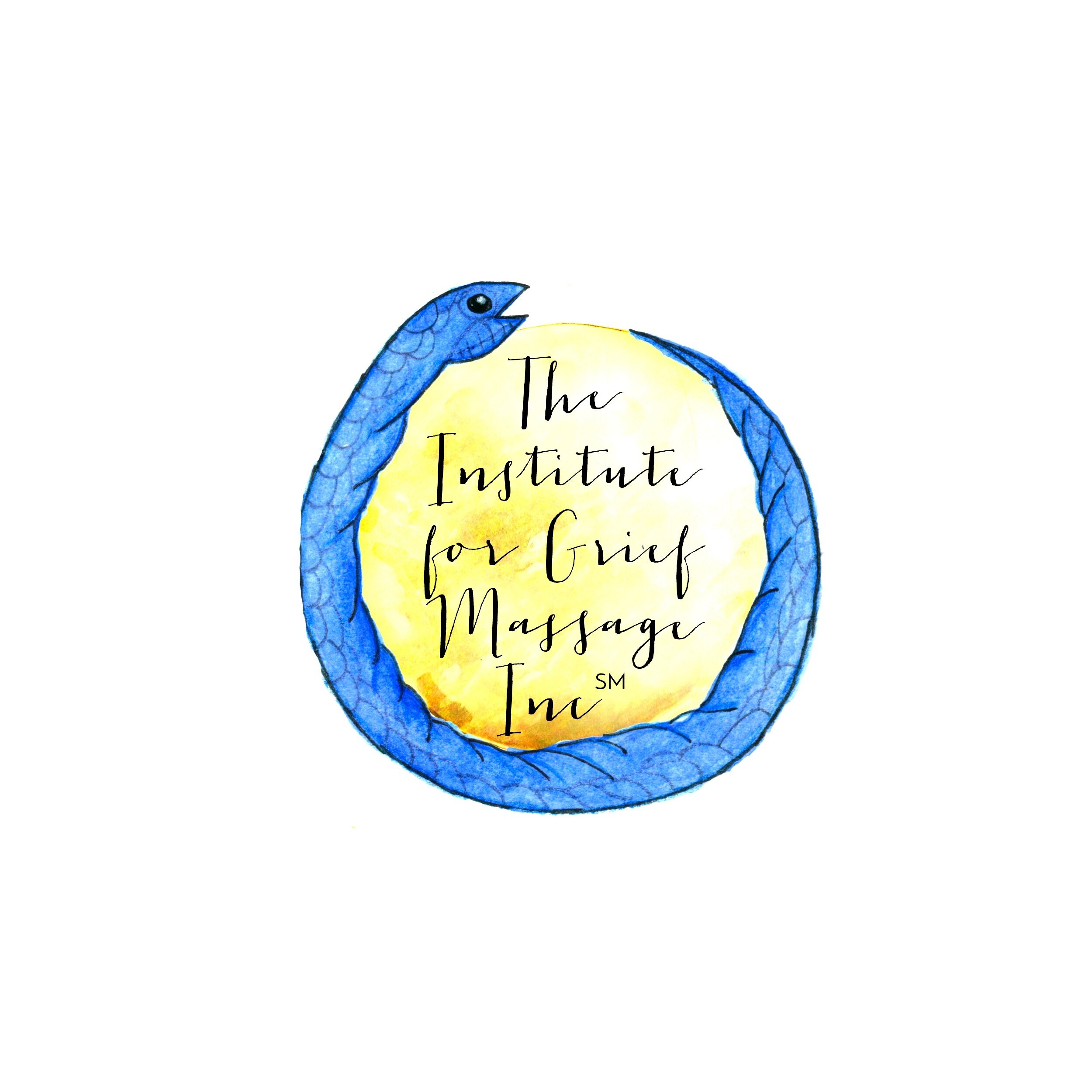Our Logo: The Institute for Grief Massage Inc℠
Our new logo, revealed in December 2018, incorporates an ancient and powerful symbol - the ouroboros - wrapped around a full moon.
What is Ouroboros?
The ouroboros symbol, a snake eating its tail, has been important to me for several years. To me, it symbolizes wholeness and being connected to the whole of life - saying yes to it all.
Embracing the full spectrum: death, loss, renewal, rebirth, hopelessness, hope, and the eternal cycle of our existence.
The ouroboros symbol became known to me during a personal “dark night of the soul” and I have drawn strength and courage from it for some time. The ouroboros symbol is not only personally meaningful to me though, in fact it has been important for many cultures dating back to 1600 BC (Geller, n.d.).
Ouroboros and Ancient Egypt
According to Bekhrad (2017), the word ouroboros is Greek for “tail devourer” and the symbol was actually found in King Tut’s (Tutankhamen)’s tomb. Geller (n.d.) asserts that the ouroboros depicted in King Tut’s tomb was found in the “Enigmatic Book of the Underworld”, an ancient Egyptian text associated with funeral rites. This is the earliest reported use of the symbol.
Ouroboros and the Gnostics
Geller (n.d.) asserts that the ancient religious order of the Gnostics saw ouroboros as representing cycles and that the symbol was also seen as pointing to eternity. And, Bekhrad (2017) reports that the ouroboros was also used to symbolize union, especially the union of opposites by the Gnostics.
Ouroboros and the Alchemists
Bekhrad (2017) states that Greek alchemists used the ouroboros symbol, along with phrase “One is All”, and the symbol is thought to be the oldest one associated with alchemy. And according to Geller (n.d.), an alchemist named Cleopatra (not Cleopatra VII of Egypt) published a text called “Chrysopoeia of Cleopatra” that was illustrated with the ouroboros symbol. Because the alchemical meaning of chrysopoeia is the transmutation of base metal into gold, it is thought that the ouroborous symbol represented the transmutation of human constraints to the alchemists.
Ouroboros symbolism has also appeared throughout history in texts and drawings associated with Hinduism, Norse mythology, and among Renaissance alchemists.
Why Ouroboros Appears in our Logo
There is great power in embracing and trusting the wisdom of life. There is something sacred about surrendering to the bigger picture, the higher power, the greater meaning for our lives and our work in the world.
With this work, with Grief Massage℠, we are regularly asked to step into the void, cross into the unknown, embrace “what is” and resist the temptation to seek a “quick fix” or easy answers to life’s mysteries.
The ouroboros reminds us that what seems like poison may truly be medicine. The ouroboros tells us that the end may also be part of a beginning. It is all connected. It is all about union. All is one.
When we embrace the idea of connection, of a bigger picture, we can truly learn to let go of outcomes and be present with “what is”.
To me, the ouroboros symbolizes saying yes to whatever comes, moving from a place of great trust, and remembering that we are part of a larger whole.
We are connected to everything. Loss is part of life and life is part of loss. We are whole, even when our hearts are breaking.
To me, the ouroboros truly carries the essence of this work. I am so proud of our new logo and filled with gratitude as I share it with you.
References
Bekhrad, J. (2017, December 4). The ancient symbol that spanned millennia. BBC, Culture. Accessed online: http://bbc.com/culture/story/20171204-the-ancient-symbol-that-spanned-millennia
Geller (n.d.). Ouroboros. Mythology.net. Accessed online: https://mythology.net/others/concepts/ouroboros

